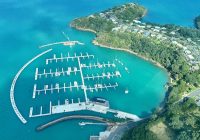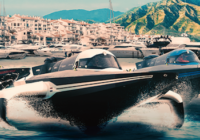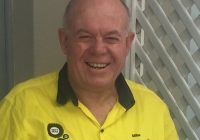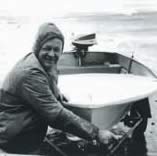
The late Peter Hunt played a significant role in the development and nurturing of the marine industry in Australia.
Today Peter was laid to rest and as a tribute to him, we publish the following piece on the History of Quintrex. Whilst we are uncertain who the author of this was, it was found in Peter’s private office. Whilst Peter’s involvement with Terry is not mentioned in this account, you can see a young Peter in the pictures. It is published with the blessing of the Hunt family.
This is the story…..
In 1945 at the conclusion of World War 2, Terry Quantrill and Arthur Arnold formed a partnership, know as Quantrill and Arnold for the purpose of manufacturing and fitting of safety guards for machinery, with particular emphasis on patented shuttle guards for looms.
Mr Arnold was an elderly man, and, after some months of operation this partnership was dissolved. Mr Milton Champion, an accountant, was asked to proceed with formation of a Proprietary Limited Company to be known as Quantrill and Arnold Pty Ltd, to continue with the business. The shareholders and directors of this company were Terry Quantrill (75%) and Frank Newman (25%) and operations commenced on 23rd November, 1945. The registered office and workshop was 35 The Promenade, Sans Souci, in southern Sydney, in a tin shed at the rear of Terry’s residence, and business was carried on from this address for some years. During this time shares in the company were taken up by Gordon Whitmore, Malcome Lindsay and Len Dent who were all employees at the time of allotment. These shares were subsequently transferred when the owners were no longer employed by the company.
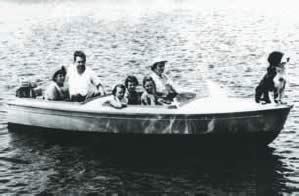
Early Quintrex prototype showcasing the soon-to-be legendary stability. Six passengers and a dog ride in stable comfort
Bill Piggott, a later identity in the company, who lived nearby, helped out after school hours.
At this time the operations of the company were the manufacturer, fitting and servicing of Safety Guards for printing and power presses, leather pattern presses, guillotines, looms and wool scourers. War surplus trucks also provided a lot of work for the firm. Single truck wheels were converted for use as dual wheels, necessitating the alteration of stud holes and centres. Metal cabins were also constructed for truck chassis. At this time there were no new commercial vehicles available, and buyers of war surplus
units had to make alterations to their carrying capacity, (eg: fitting dual wheels) to make them a viable proposition. Quantrill and Arnold also engaged in the construction of semi-trailer turntables and built a semi-trailer body. Bases for hydraulic moulding presses were constructed, ball mills were built and erected, tow bars for motor vehicles were made and fitting and general welding and repair work undertaken.
It was during this period that the first boats were constructed. They were a 21′ cruiser followed by a 20′ cruiser, both constructed of sheet steel over welded steel frames. After shot blasting and zinc spraying they were returned to the factory for painting. The sale of one of these was entrusted to a Marine Broker on Sydney Harbour and, when payment was subsequently made with a cheque drawn on a closed bank account, police action was taken to recover the boat which was then sailed from the Harbour to the Company’s premises at Kogarah Bay becoming the first Quintrex “outside” boat.
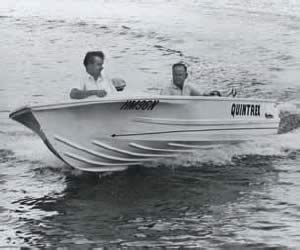
The flared Bow was first released in 1968 and has become a permanent fixture on most Quintrex models. The stretch forming technology used to create this marvel is just as revolutionary today as it was then. The design fundamentals used to create the flared Bow paved the way for the development of the Millennium Hull and now the Millennium Blade Hull
Transport of men and materials to job sites was by the firms first vehicle – a 1929 “A” model Ford Roadster, which had the rear dicky seat removed and replaced by a tray with sides and tailgate. This vehicle was supplemented by an Indian Motor Cycle with sidebox and by private motor cars with copious running boards and luggage racks.
Business was not easy. The blackmarket was often the only way of overcoming the chronic shortage of materials and equipment. Power blackouts and power rationing had severe effects on the planning of jobs and use of available manpower. Shortage of capitol and lack of reserves meant that any small dividend which may have been declared, became a book entry only. Cheques were drawn for the dividend and immediately rebanked and credited to Loan Accounts.
Without ready funds there was much improvisation, with some equipment doing jobs never intended by the manufacturer. Compressed air was obtained by replacing 2 spark plugs in an old Fiat engine with home made valves, and driving the engine on the two remaining cylinders. When power restrictions were imposed, this same Fiat engine was used to drive a shaft conveying power by belting to drill, lathe etc and, for arc welding, a Lincoln D.C. arc welder was turned on its side with the bottom removed, and direct coupled to the shaft.
After some years at the Sans Souci premises, Terry Quantrill built a small factory on a block of land in Taren Point, which was an area then largely undeveloped and (as captain Cook Bridge had not been built) reached by a punt across Georges River. These premises were rented by the Company from Terry Quantrill.
A telephone service was not available, but eventually the proprietor of Berts Soft Drinks agreed to take some messages for Quantrill and Arnold. As his factory was in the next street, and several blocks further along, a bell line was strung from the trees between the two factories, and used to summon someone to his phone when required.
The first aluminium boats were built here as “fill-in” jobs between other work, and were pram type dinghys with oxy welded seams which were sold direct to individual buyers. In 1954 Frank Newman ceased active work with the Company for a time but still retained his interest there.
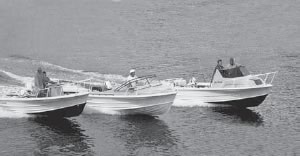
December 1955 saw the company name changed to Quintrex Australia Products Pty Ltd and gradually the building of boats occupied more of the workshop’s time, until a stage was reached, where, in order to find a wider market, they were sold through appointed agents for resale instead of being sold direct.
About June 1955, Bill Piggott returned to work with the Company as Terry’s ‘right hand’ man, and Frank Newman returned on a part time basis in 1964 by which time the construction of boats was virtually the sole occupation of the workforce. As space again became a problem, Terry sold the Taren Point Road factory to finance the purchase of a property at 460-462 The Boulevarde, Kirrawee. An old house was situated on the rear portion of this block, and Terry Quantrill, who had sold his home at Sans Souci, made this house his residence. Plans were drawn for a factory and office on the front portion of the property. The buyer of the Taren Point factory required early vacant possession, so operations were transferred to rented premises near the corner of Taren Point Rd and Toorak Ave until completion of the Kirrawee factory. When the new building was ready for occupation, early in 1966, all staff and equipment moved there and Frank Newman resumed full time in March 1966.
By this time a full range of aluminium boats were being produced on a regular basis in sizes 8′, 10′, 12′, 14′ and 16′ of which approximately 26% were under 12′ in length, 20% were 12′ boats and the remaining 54% were of the larger models. During the last few months of 1966 the production rate was 46 boats per week.
Early in 1968, Mrs Betty McCormack was asked to advise on aspects of the clerical and accounting functions of the business. Subsequently Betty McCormack commenced full time in June 1968. As production increased, the old house was demolished and the factory was doubled in size by extending over the former cottage area. The need for still further space, was overcome by renting the adjoining property at 458. Eventually the Company purchased 458 from the owners and then purchased 460-462 from Terry Quantrill.
All of the standard models were still being produced, but numerous modifications had taken place piecemeal over the years. Any and every opportunity had been taken to improve design and construction, particularly in relation to flotation, seats and bracing to take the thrust of larger outboard engines. New aluminium extruded sections had also been introduced.
A number of specially designed boats had also been built. These included boats for the N.S.W and A.C.T Police Forces and a few with pressings in the sides to give the appearance of clinker construction for a private buyer. Also an 18′ displacement hull with an inboard diesel engine – the “Little Investigator” – had been built for the Leyland Brothers in which they motored from Darwin to Sydney in the closing months of 1968.
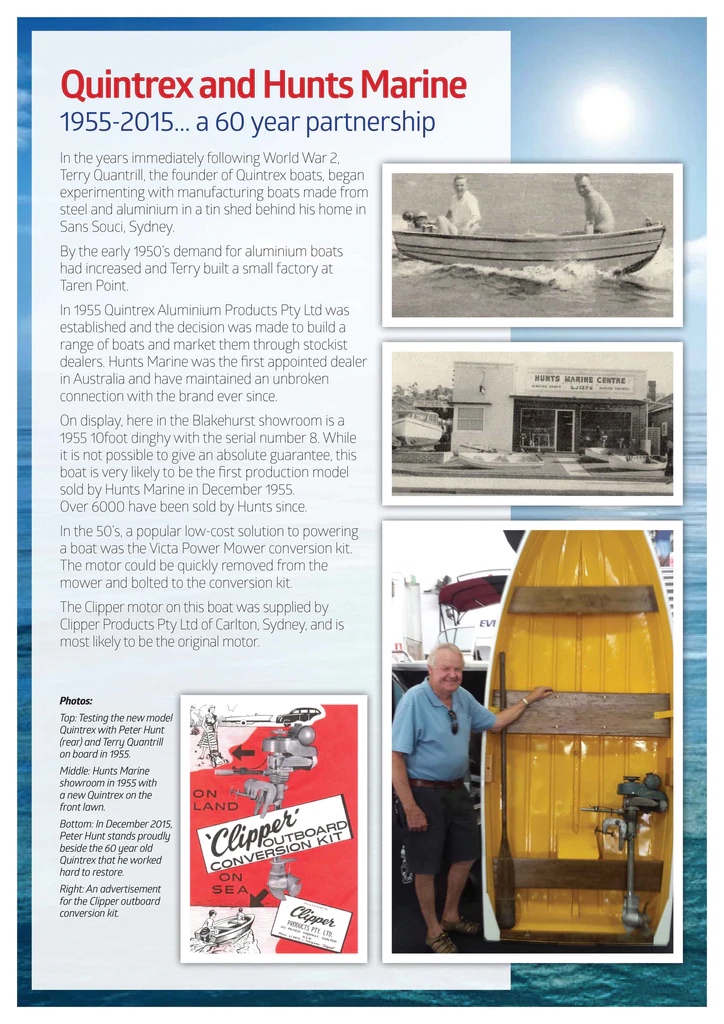
In September 1967 a major variation in construction of the 14′ model appeared. This was the now well known Quintrex feature of a flared bow and the 14′ version was soon followed by the 16′ and an entirely new size, the 13′ model. Until now, the problems of working and securing the basic aluminium materials had prevented the introduction of compound curves, which could so easily be moulded into fibreglass type boats. The advantages of pleasing looks, softer rides and drier boats was obvious, and a decision was taken by the Directors to make an attempt to produce this in aluminium, knowing that this was going to be a long and costly project. The first flared bow boats were produced by having the compound curves formed by a “wheeling” machine in a nearby sheet metal workers premises, and then a full scale effort was made to build a stretch forming machine capable of performing the required operation.
A building on the rented property at 458 The Boulevarde was devoted to this purpose and the building of the machine and forming moulds commenced. This being a pioneering venture, Quintrex could not profit by the mistakes of others, and a lot of trial and error ideas were evaluated before success was achieved. The machine and moulds were designed by Terry Quantrill and the construction and testing carried out under the supervision of Bill Piggott. Obtaining aluminium sheeting of the correct temper for stretching and learning its limitations was another problem which had to be solved largely as a first time experience. After months of work and effort, production of old style 14′ boats ceased in August 1967 and the flared bow Quintrex “Fishabout” was introduced to the market in September 1967.
The increased size of the premises, work force and output resulted in extra office staff by the addition of Val Mellocco and later a further clerical assistant, whilst Barry Hancock was engaged in August 1970, as sales representative. Barry Hancock and Betty McCormack later became shareholders in the company which continued to prosper.
By the early ninteen seventies the company had been operating for more than 25 years and was greatly expanded from its initial small beginnings but was still very largely a “family” type concern. None of the directors who had guided the operations over the years, had family members in the business trained to take their place in the event of them having to to relinquish personal involvement. At the same time it was felt that the potential of aluminium boats warranted a much larger approach than was available under the existing management and after discussing the matter on a number of occasions, a decision was taken to sell the Company if a suitable buyer was found, prepared to carry on and expand the developments of the past quarter century. It was thought that someone interested in other aspects of aluminium would be ideal for this purpose and to this end an approach was made to Alcan Australia Ltd who were the suppliers of virtually all the aluminium used by Quintrex and with whom there had been an excellent customer/supplier relationship for many years. This initial approach led to a series of meetings culminating in the acquisition of Quintrex Enterprises, Quintrex Marine and Quintrex Aluminium Boats Pty Ltd by Alcan Australia Ltd in 1976.
Frank Newman left Quintrex at the end of 1977 and retired to Huskisson on the New South Wales south coast.
Barry Hancock a “jack of all trades” moved into the role of Sales Development Manager and also Production Manager. When Quintrex relocated to Queensland, Barry stayed in Sydney and continued in the marine industry with his own business called Aluminium Boat Repairs in Taren Point. Barry passed away in Mid 2015.
Bill Piggott was responsible for the new generation range of metric boats, the design of which, was completed in early 1979. One of these models, the Breezeabout 4.0 earned Quintrex the 1979/1980 Power Boat of the Year Award. Other models featured a combination of fibreglass and aluminium, which was a world wide innovation. Bill sadly died late in 1979 and was a great loss to Quintrex.
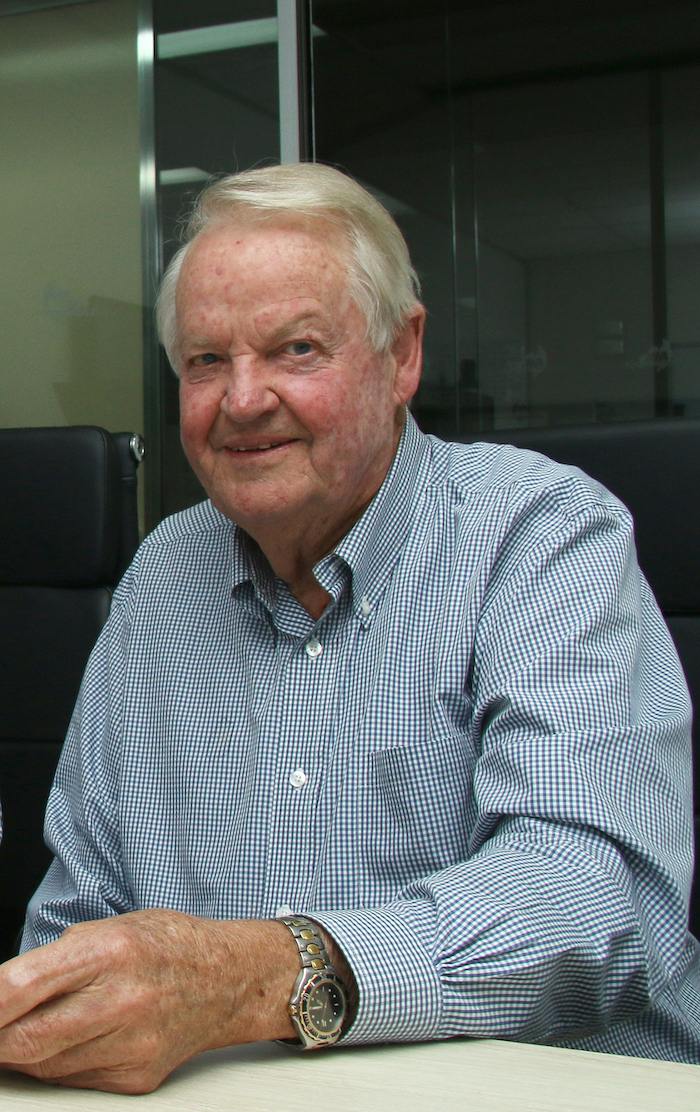
The late Peter Hunt was a founding member of the Boating Industry Association of NSW in the 1960’s and served as both President and Vice President of the Association. He was a Life Member and honoured with the industries Robert Greaves achievement award in 1991.
Peters’ dedication to the industry was considerable, having been instrumental in launching the Sydney International Boat Show in the 1960’s.
Peter was a long-term member of the recreational marine industry with the family business set-up by his father, an engineer and game fishing enthusiast Edwin Hunt in Blakehurst in 1946. Peter joined his father’s business in 1951.





